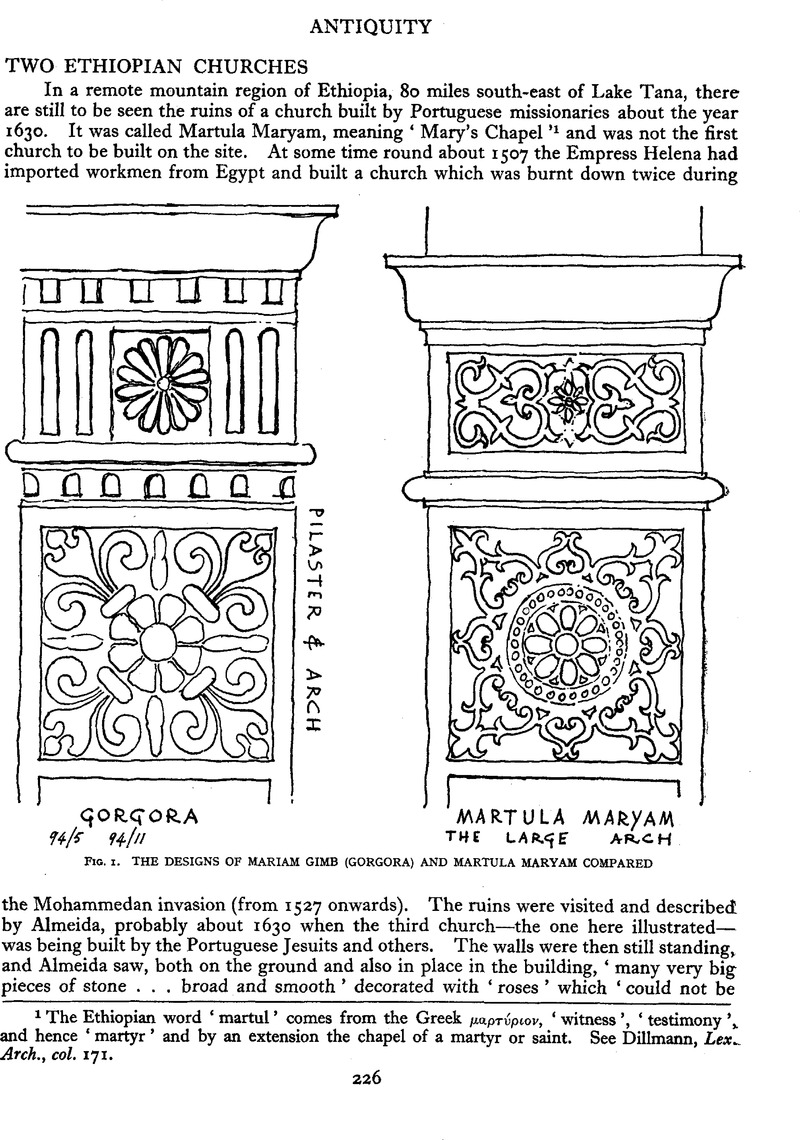No CrossRef data available.
Article contents
Abstract

- Type
- Notes and News
- Information
- Copyright
- Copyright © Antiquity Publications Ltd 1956
References
1
The Ethiopian word ‘ martul ’ comes from the Greek 
2 Quoted from the translation of Almeida’s History in ‘ Some Records of Ethiopia’ (Becking-ham and Huntingford), Hakluyt Soc, 2 Ser., vol. evil, 1954, 104.
3 Narrative (Hakluyt Soc., vol. LXIV, 1881), 350.
4 See my Fung Kingdom of Sennar (Bellows, 1951), 281’3.
5 Op. cit., pp. 105–7. For Beke see Archaeologia, XXXII, 1847, 38–57 and Journ. R. Geogr. Soc., XIV, 26.
6 The ancient church in the monastery of Debra Damo (see ANTIQUITY, XXIII) has a stair leading to lofts and rooms in the upper part of the church.
7 It is said that Indian builders were concerned in the erection of the palaces of Gondar; see Villard, Monneret de in Rivista degli Studi Orientali (Rome), 17, 328,Google Scholar quoting Peieer, P.E., Zur geschichte Ab. im 17 Jahrhundert, Berlin, 1898, p. 38.Google Scholar


